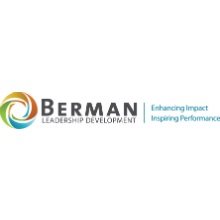Strategies for Facilitating Conversations on Race
Throughout my experiences, I have seen first hand how difficult it is to facilitate conversations about race and racism. As a Black male, I personally find it challenging to express my racial experiences and perspectives to others who may not share similar backgrounds. Facilitating these conversations may often involve tension, conflict, and fear which contributes to discomfort. This may mitigate the probability of continuing dialogue. No matter what setting these conversations take place, both the facilitator and participants may bring emotional experiences along with their deeply held values and beliefs into the room. Throughout my previous experiences, I have collected valuable resources and takeaways that have prepared me to become more comfortable with the discomfort that comes with leading conversations about racism, privilege, and power. The following are suggestions for facilitating productive conversations on race.
#1: Build Relationships
When talking about race, both you and your participants will bring your fears, negative past experiences, and resistance that will make building relationships imperative for a successful outcome. In my previous experiences, this first step is essential, yet can be the most challenging. Being genuine and vulnerable has improved my ability to build relationships with my audience members. To add a personal touch I always share my experiences with racism and microaggressions to propel others to take risks. For example, I often explain to participants that although I am well-educated and successful within my career, I still have experienced, and continue to experience being called a “nigger” and “basketball player” by white individuals. I often struggle with sharing these experiences because I do not want pity or remorse from the audience, because a majority of the time my audiences are mostly white. Nevertheless, I have found that self-disclosure like this may promote others to share their experiences with either holding racist ideologies or experiencing a discriminative event. However, I have seen how many members may be initially hesitant to verbally engage in discussion about sensitive topics like this. Therefore I often use a website called: “Poll Everywhere” to allow members to anonymous text their responses when answering various questions that I come up with. One question I typically present to the audience is: “What are your beliefs about those who identify as Hispanic and homosexual?” The responses I obtain are projected on the computer screen and promote insightful reflection and meaningful member interactions when discussing biases against marginalized groups.
#2: Go Deeper
Participants may enter these conversations at different places on a continuum of understanding and, as a result, will have varying attitudes about doing this work. For instance, I have facilitated groups in which some participants held a color-blind ideology and strongly felt that racism has never existed. Prior to beginning these conversations many individuals may already hold fixed ideologies and beliefs about the topic being discussed. Therefore, challenging participants to “go deeper” may help plant a seed in their mind that can potentially lead to new ways of thinking about race and social justice issues. To accomplish this goal, I find beneficial to conduct a group activity called the “Four Corners”. The participants split up into four groups which pushes them to engage in more in-depth conversations to learn about each other’s experiences. While in these groups I have found it helpful to ask the following questions to assist with shifting defensiveness to reflection: 1) What are your fears around talking about oppression, discrimination or race? 2) When have you made a mistake or done something that you felt offended another person similar or different than yourself? How did you handle this situation? 3) Do you have any insight as to why it may be difficult to believe what others are telling you about their experiences? I have found that these questions create meaningful dialogue and allow group members to learn from one another.
#3: Understand that Learning Occurs Differently, at Different Times, for Different People
Everyone is at different places on the continuum of cultural awareness. What works for one person may not work for the other. If negative responses occur, it is important to not take them personally. Participants will bring different attitudes, beliefs, and experiences around race relations. As a facilitator, I have felt defensive at times when others have made me the object of their anger rather than looking inward. Specifically, topics centering on white privilege and systemic oppression have sparked up emotions of guilt, rage, and frustration from my audience members and myself. Having these conversations with individuals who primarily identify as the majority race has at times further exacerbated my feelings of being targeted. However, by displaying empathy and authentically seeking to better understand their viewpoints I have been able to see alternative perspectives. This has assisted with my comfort, confidence, and emotional reactions during these conversations.
Additionally, since everyone learns differently, it is important to offer the audience multiple avenues for absorbing the content. For instance, when first beginning these conversations I always incorporate a visualization activity. For example, I might ask them to imagine going on a vacation of their dreams. During this activity I provide verbal instructions for members to visualize going on their flight to their destination and walk them through different encounters they may experience (e.g., going to the hotel, eating at a restaurant, etc.). After this activity concludes I ask members about the racial/ethnic, sexual orientation, gender, and backgrounds of individuals that came up in their imagination. Most of the responses I tend to receive show evidence that the background of individuals were heterosexual, white, males, or representative of the majority population. This activity helps to promote insight of unconscious bias and provides audience members another platform to engage in insightful learning.
Conclusion
In summary, sharing your personal experiences, challenging audience members to “go deeper”, and offering the audience multiple avenues to absorb the content that you are sharing can be greatly helpful when facilitating conversations on race. Using platforms like “Poll Everywhere”, having members participate in the “Four Corners” exercise, and implementing visualization activities may assist with making your conversations unique and meaningful.
Resources
Hollins, C. D., & Govan, I. M. (2015). Diversity, equity, and inclusion: strategies for facilitating conversations on race. Rowman & Littlefield.
Sue, D. W. (2015). Race talk and the conspiracy of silence: understanding and facilitating difficult dialogues on race. Wiley.
Poll Everywhere: https://www.polleverywhere.com/
About the Author
Ryan C. Warner, Ph.D. is a clinician, researcher, and speaker. Ryan is passionate about promoting diversity and social justice among underrepresented populations. He also provides consultation services to enhance organizational capability by delivering education and training on multiculturalism, inclusion, and leadership development. (Email: [email protected]; Twitter: @DrRyanCWarner; Linkedin: https://www.linkedin.com/in/ryancwarner/).

















